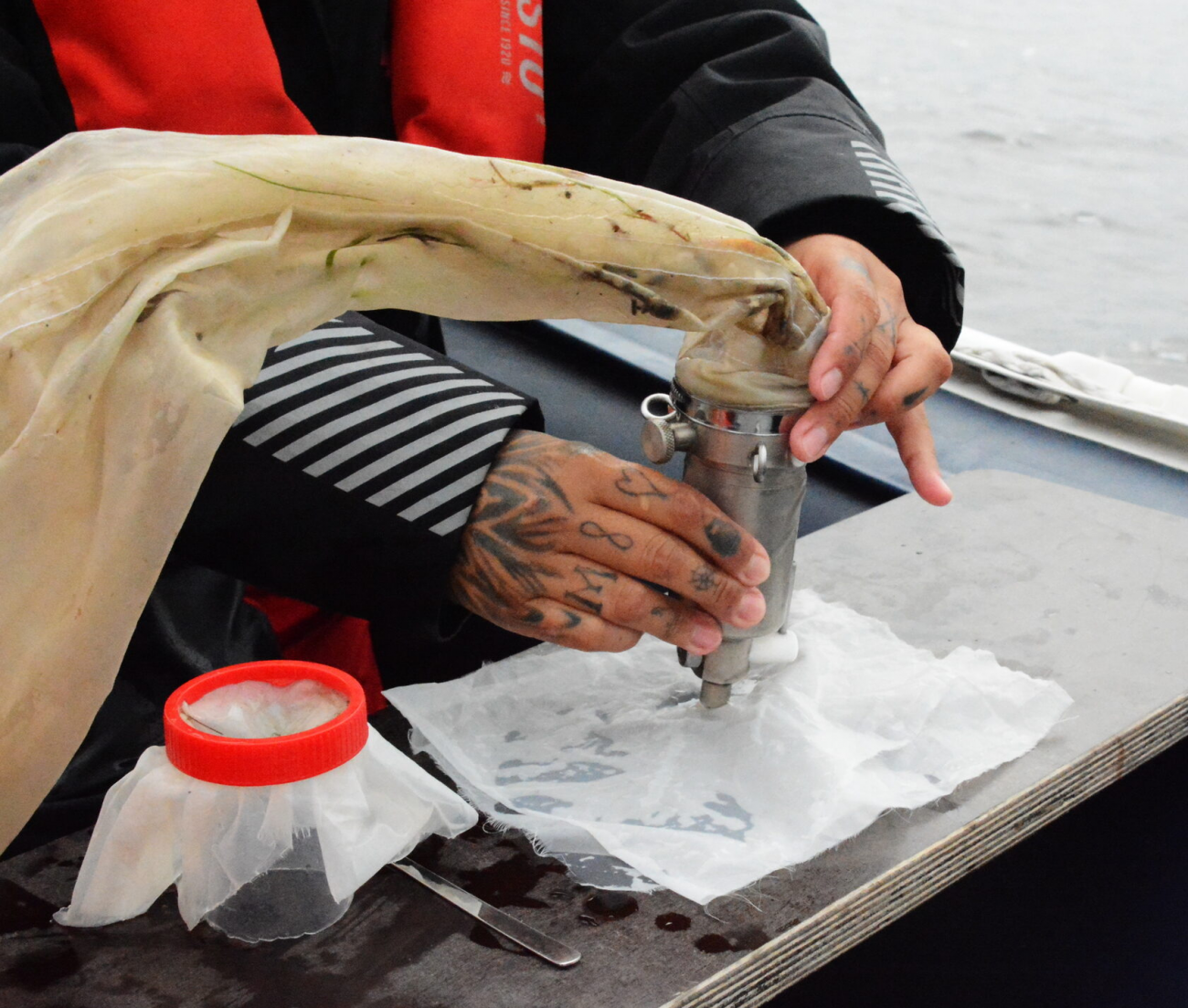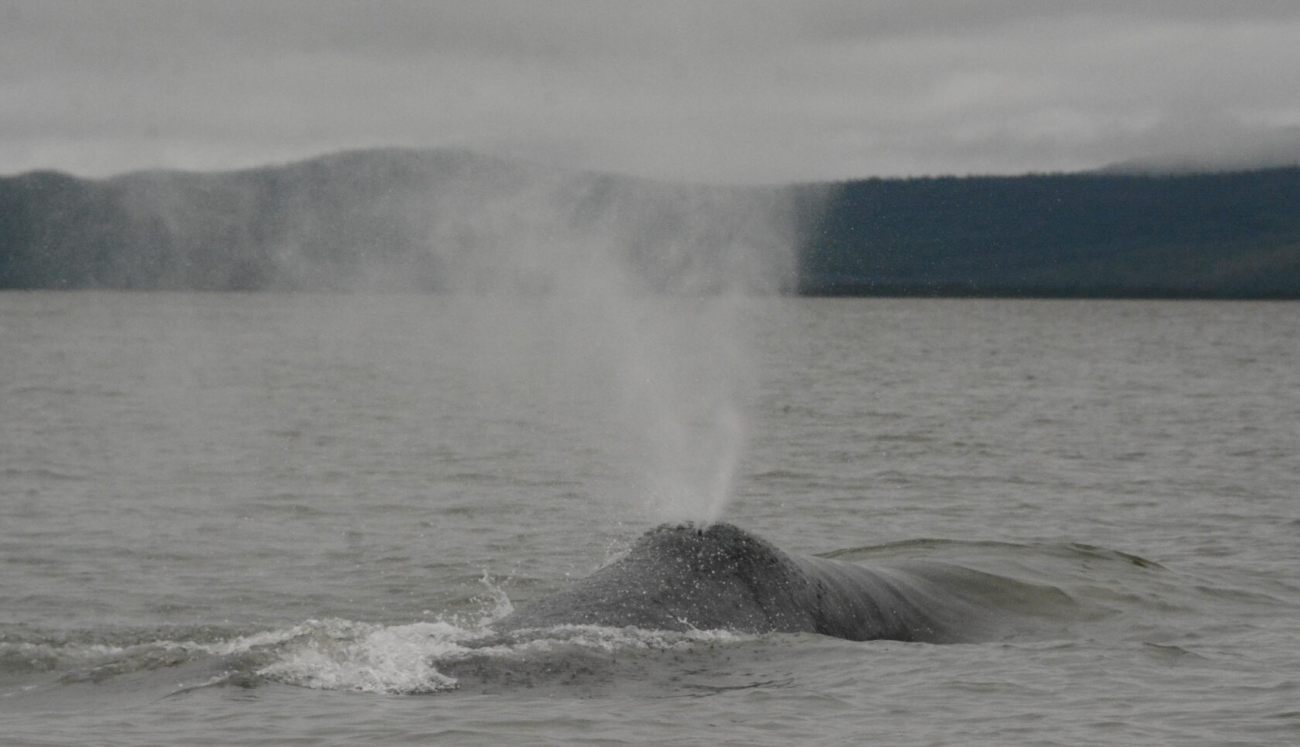
Another expedition to study bowhead whales, organized with the support of the Nature and People Foundation, has successfully concluded. Scientists from the A.N. Severtsov Institute of Ecology and Evolution of the Russian Academy of Sciences (IEE RAS) studied the prey of these marine giants, expanded the photographic catalog of individuals, and collected more than ten biopsy samples for genetic analysis. The information obtained will not only help better assess the population's status but will also be useful in developing comprehensive recommendations for the conservation of this unique species.
The scientists spent more than a month on the coast of Ulban Bay in the Sea of Okhotsk. The scientific team arrived there from Nikolaya Bay, where, during another expedition, they tested a new, unique method for attaching satellite tags to whales using a drone for the first time in Russia.

Despite challenging weather conditions—the bay was heavily stormy and frequently foggy this year—specialists managed to collect 56 zooplankton samples. These data will allow researchers to continue studying the prey base of bowhead whales in the Sea of Okhotsk and assess the extent to which whale distribution depends on the presence, composition, and size of zooplankton communities.
A total of 30 bowhead whales were encountered during the expedition. Scientists say this is a small number compared to previous years, and note the animals' unusual distribution—at greater depths midway between the shores, rather than at the head of the bay. Conducting research here is more challenging, but they were nevertheless able to collect 11 biopsy samples, most of which were from whales they hadn’t encountered before.
Over 3 hours of video footage was captured during the expedition. 85 video files were suitable for subsequent photo-identification, photogrammetry, and behavioral analysis of the bowhead whales.
"We also spotted an unusually large number of killer whales this year. Groups and families with calves repeatedly visited the bay, so we were able to work with these animals as well," says Danila Skorobogatov, a researcher at the Institute of Ecology and Evolution of the Russian Academy of Sciences. "We managed to obtain photo IDs for eight individuals, and we even managed to take a biopsy sample from one young killer whale (presumably a male)."

The field season has ended, but the scientists' work continues. This winter, they will analyze the collected biological materials and monitoring data, and expand the photo, video, and genetic catalogs of the whales encountered.
"We see that the Nature and People Foundation's project to conserve and study the whales of the Sea of Okhotsk is steadily progressing and systematically moving toward its goal. This was made possible thanks to the assistance and participation of many organizations and our supporters, for which we would like to thank them once again," notes Irina Onufrenya, Head of the Nature and People Foundation's Wildlife Conservation Program. "I hope next year will be no exception—the scientists still have a large amount of data to process, and we are already planning new expeditions and research."
